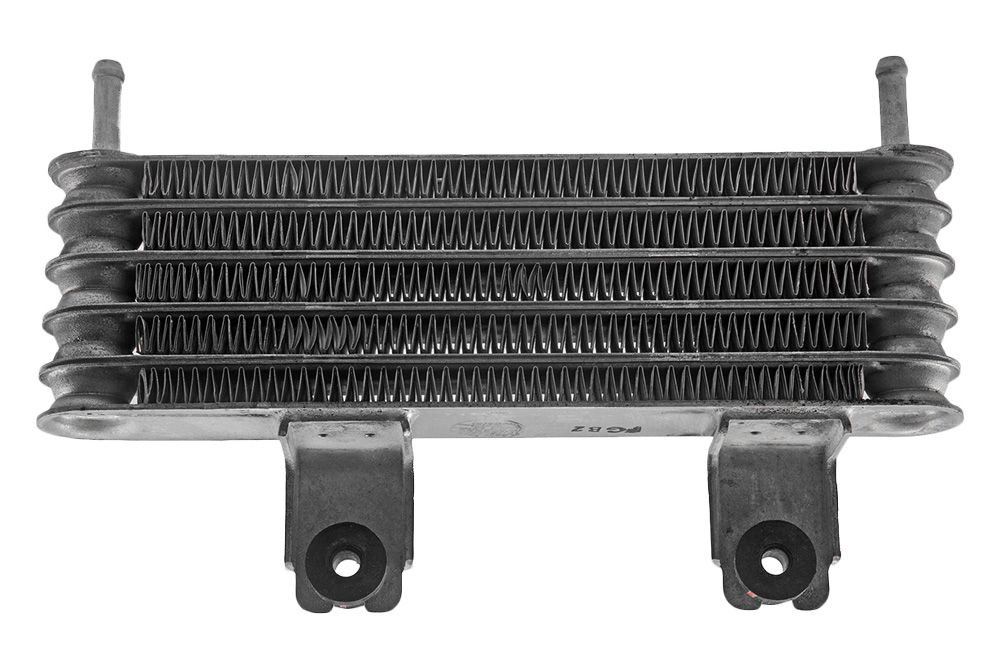Vehicles manufactured after 1975 will have transmission coolers built into the car’s radiator. It is designed to cool down transmission oil during operation. The emergence of it helps to extend the life of the transmission and increase the fluid’s service intervals.
Stress on the transmission builds heat
Under normal operating temperatures, the transmission oil will flow properly and allow adequate friction. When the temperatures get too high, the oil can break down, or lose it’\s ability to lubricate some parts while hydraulically separating others. By installing a transmission cooler, these temperatures are kept as low as possible by forcing the fluid through a hose to the front of the vehicle, then through a series of coils and fins to cool it down. It returns to the transmission to complete the cycle. The pressure of the transmission in operation keeps the fluid in motion, so the cooler will not operate when the vehicle is turned off.
Coolers may already be installed on some models
Vehicle makers saw the benefits of a transmission cooler when they began to design transmissions to accommodate federal economy and emissions standards. The new transmissions ran hotter than previous designs, so several manufacturers built “twin-core” or “multi-core” radiators to cool down the transmission fluid. These radiators have a coil in them that allows the transmission oil to run through the same fins that the engine cooling system uses. Replacing the radiator requires special tools and parts for twin- and multi-cored models.
Trucks and towing
Almost all manufacturers of pickup and SUV trucks offer a “towing package,” which includes a transmission cooler. The added weight of a trailer will put more stress on the transmission, and the oil will heat up quickly. Most often, these towing packages will have an external cooler mounted in front of the engine cooling system radiator. Multi-core radiators are used less often in towing situations, as they are not as effective as separate coolers.
Aftermarket coolers
A transmission cooler can be added to almost any vehicle, provided that the transmission has inlets for the hose adapters. Most aftermarket kits will include adapters for a particular range of most popular transmissions, but individual models may require a specialized adapter. If no inlets are on the transmission, a professional can drill them into the casing at the proper locations. The cooling radiator will them be placed in front of the existing engine radiator with zip ties or press-in adapters. The lines can be run in any convenient location, as long as there is adequate clearance.
Benefits and problems
The right transmission cooler must be selected, as one that is too large may not allow the transmission to reach operating temperature, or might take too much pressure to push the fluid through at the proper rate.

Why to add a transmission cooler?
by
Tags:
